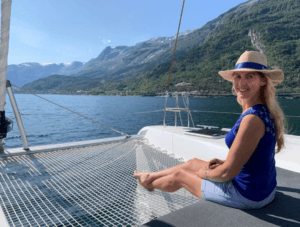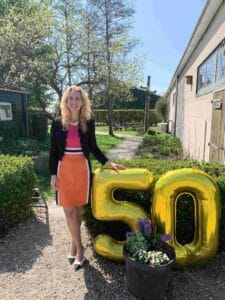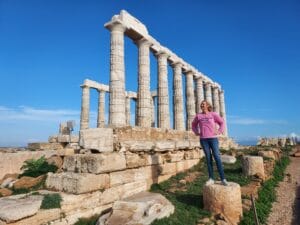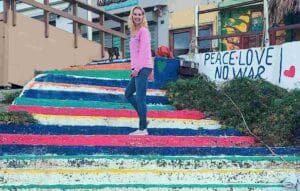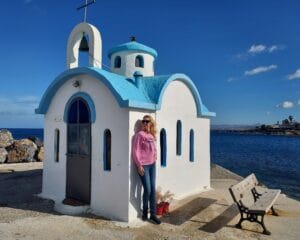After having visited the surprising island of Elba, we prepared for the crossing to Corsica. The famous French island, known for it’s rough features. Corsica is actually the largest island in France and the fourth largest in the Mediterranean after Sicily, Sardinia and Cyprus.
We prepared together with our friend Yvonne this 6 hour sail, and off we went! It was a lovely trip, the weather was in our favor, sunny and the wind was comfortable.


After 6 hours, around 16.00h we saw land again and we came ashore in northeastern Corsica.

Santa Severa, our first stop at Corsica, had a sheltered bay, where we could park our boat to step back on land. It’s always funny when you have been on the water for a longer time: it’s odorless to be at full sea. It is when you come near land and haven’t had a smell for 6 hours, it feels like you’re sticking your nose in the potting soil! All the smells of the conifers on the land seem to be extra strong.


You see us above standing under the flag of Corsica. The flag consists of 3 elements: a white background with a black image of a Moorhead in the middle, who wears a white headband on the forehead. This flag has a deep meaning for the islanders, it has to do with freedom. You see the flag flying everywhere: on houses, along the road, on boats… impossible to miss!
The ’finger of Corsica’: Cap Corse
From the 13th to the 18th century, Corsica was part of the Republic of Genoa. Under the Treaty of Versailles (1768), the island came under French control and after the French Revolution it became an integral part of France. The French language was introduced and Corsican faded into the background. Corsican (u Corsu) is the local Romance language. This is a somewhat French-influenced Tuscan and therefore a variant of Italian. Double influences can be seen everywhere on the island.
We immediately noticed the mix of French and Italian language (u Corsu) on the street signs. We entered a bar and had our first drink on Corisa, which was brewed on the this part of the island as well! This part is called Cap Corse or ‘the finger’ of Corsica, the most uninhabited and rugged part of the island which is 180 km long and 80 km wide.

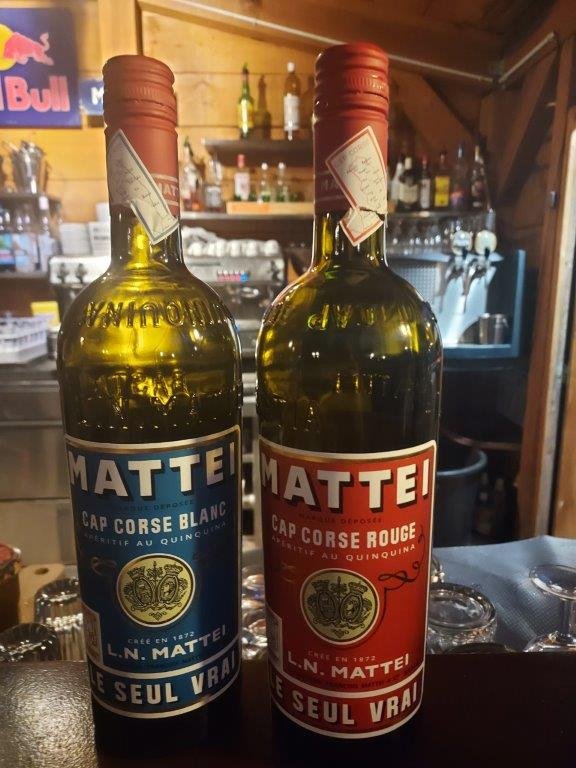
Centuri
It is always so interesting that travelling our over and crossing borders means stopping at customs, checking passports, filling in forms, etc. When sailing, you cross ‘borders’ over silently. From Elba to Corsica, was switching from Italy to France without noticing, just being on the water and travelling!
Our next stop would be Centuri, and to get there we ’rounded’ the cape and were now at the Westcoast of the finger of Corsica.
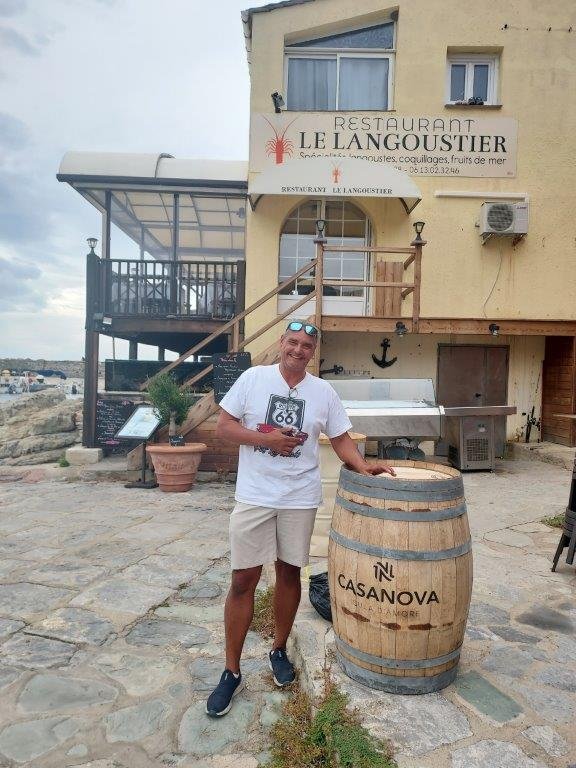
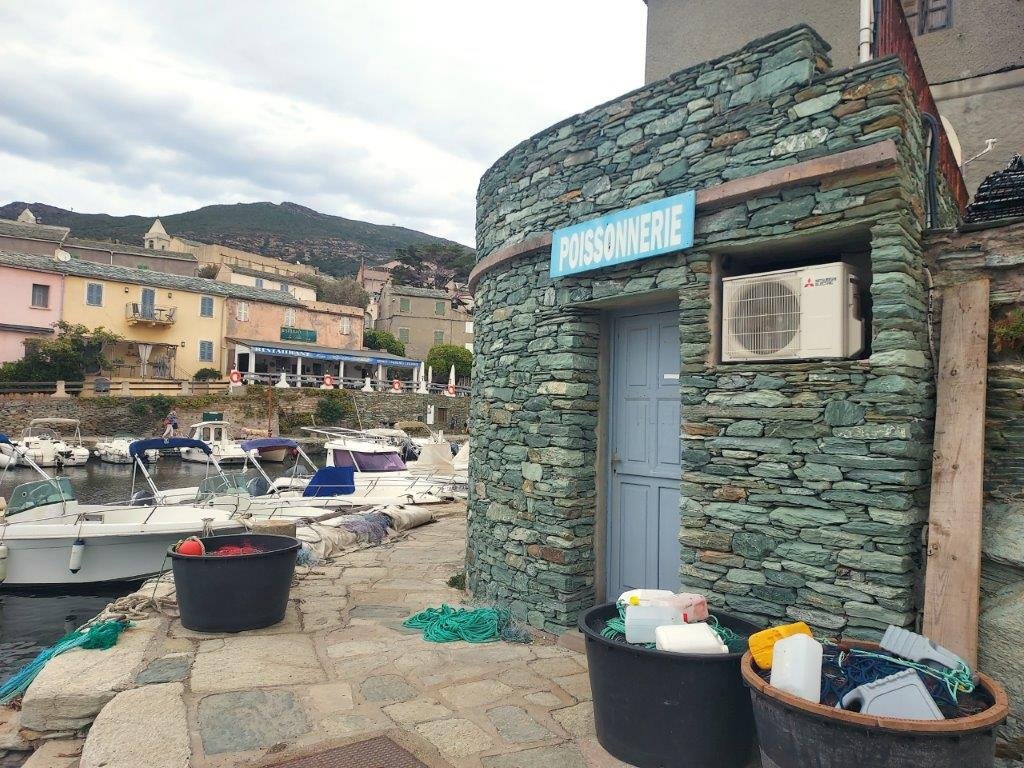
Centuri is known for it’s picturesque port with actually more restaurants than inhabitants. Because they specialize in fish, lobsters mainly. We had a drink in one of the many nice restaurants around the little harbor. We went back in the dinghy to our boat which was at anchor in front of Centuri.

The 7 winds of Corsica
We already noticed the many different winds around Corsica. It’s an island in the middle of the Mediterean Sea, but also quite close to land. So for instance, the influence of the Alpes close by in the north or the African winds coming from the south, are noticeable. Each wind has it’s own name, power and length (sometimes 3 days in a row) and brings different kinds of weather too (dry, sunny or stormy).

Clockwise the names of the 7 winds on Corsica, starting bottom left:
- Libecciu (Southwest): moderately strong; large temperature fluctuations; predicts rain
- Maestrale (Mistral; northwest): cold and dry; brings clear vision
- Tramontane (North): cold and dry; from beyond the Alps
- Gregale (northeast): damp and stuffy
- Levante (southeast/east): warm and humid; responsible for the formation of lagoons
- Ponente (West): warm and dry
- Sirocco (Southeast): humid and hot; brings thunderstorms
In this case, we had the west wind, Ponente, which brought us sunny weather. You can also see another name for the northern part of Corsica: Haute-Corse.


Saint-Florent
After having sent about 5 nights at anchor, we wanted to stay in a harbor again, full up our 600 liter tanks, electricity and have dinner comfortably in a restaurant. So we sailed to the harbor of Saint-Florent. Traditionally this has been a fertile region, which is sometimes called the garden of Corsica. Oranges and olives, among other things, are grown here. And Saint-Florent has a beautiful background of mountains. We never knew Corsica had this many mountains! On the small island, already 50 mountaintops are above 2.000 meters, the highest being 2.700 meters.
Gilles tried a Corsican beer, because like it’s many winds, the island also has many beers. The most famous beer is called Pietra, it is typical Corsican, because it is made from chestnut and malt. It has an amber color. And talking about colors, on the Westcoast of Corsica, you have amazing sunsets, with unobstructed views of the mountains. Yvonne watched it on the bow of the ship!


L’île-Rousse
We continued our sail and ended up at a village called île-Rousse. It is actually not an island, but that Sunday it was the center of attention for many French men, because it was part of an international championship Pétanque (which we call Jeu de Boules in the Netherlands). Many teams in matching T-shirts could be watched play the game on clearly defined fields. The referees measured the small differences in distance there sometimes was.
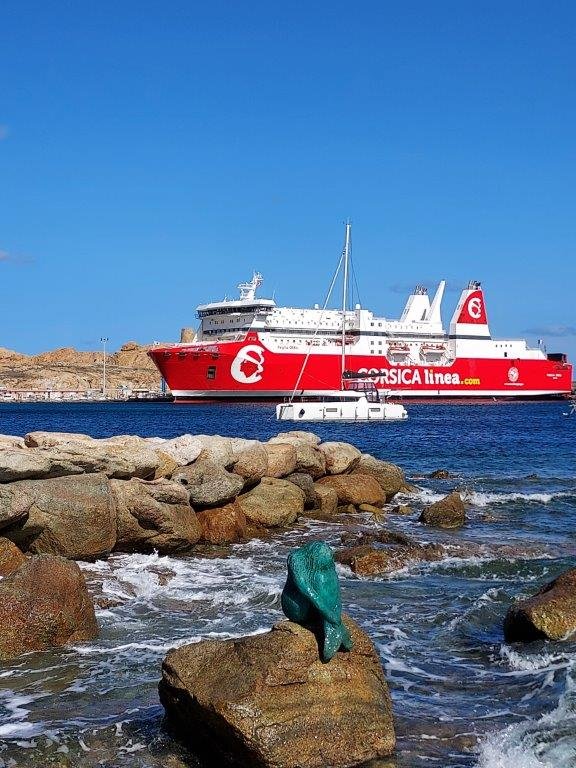


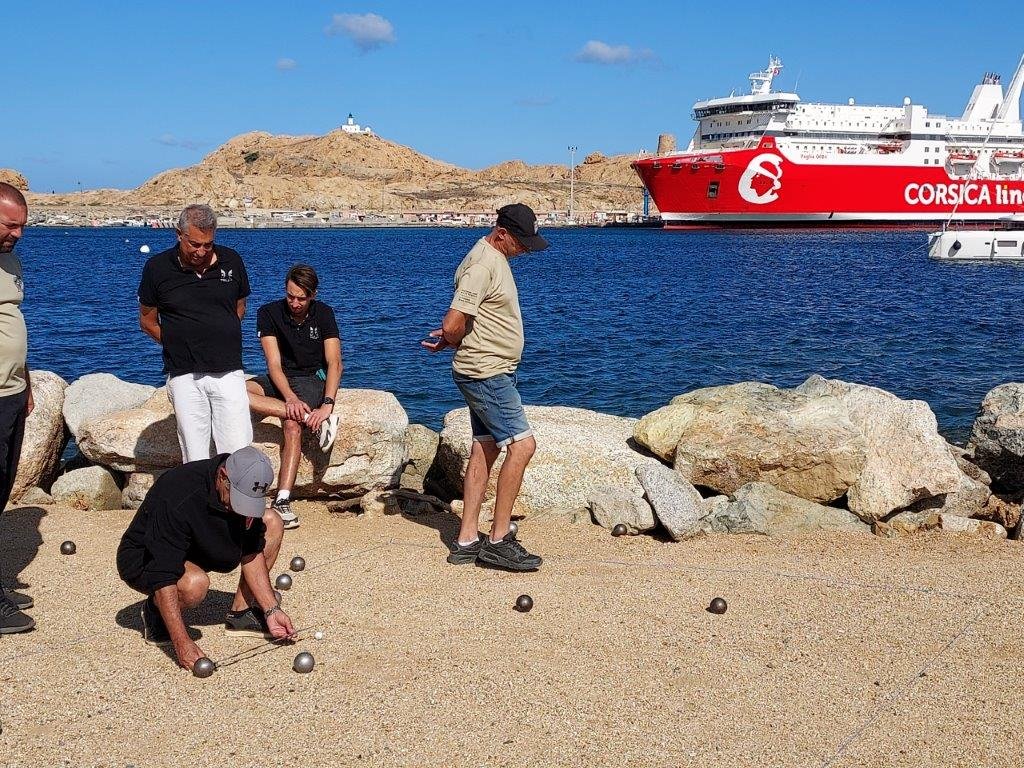
Calvi
We sailed to our last stop together with Yvonne, which was the city of Calvi, and clearly a different wind was blowing now: high waves, up to 6 meters. Still sunny around us, but the conditions at sea were rough. We were happy to sail into the sheltered bay of Calvi. Where we would see lots of catamarans again. So far, we had seen many catamarans sailing around Corsica.
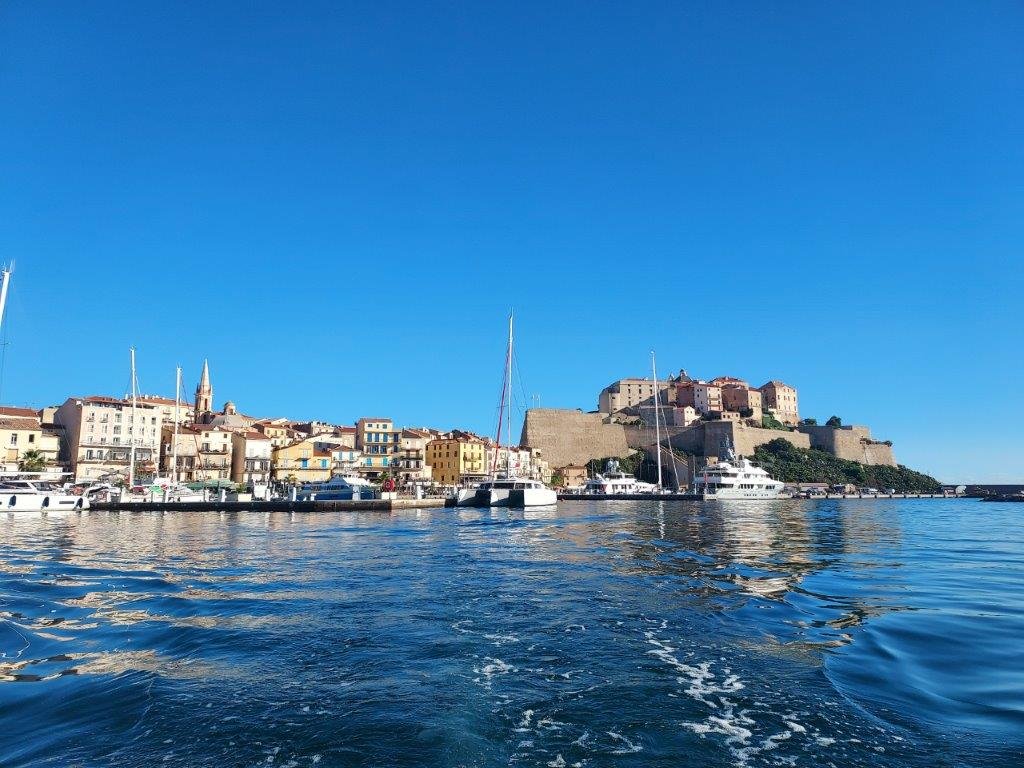
Calvi was a magnificent town to walk in. We stayed here 2 days, walking the small streets and cosy squares, enjoying walking along the boulevard of the harbor.


We especially enjoyed walking to the citadel, towering over the city. It was built under the Genoese government between 1483 and the 17th century to have a stronger defense. The fortressis are located on a hill near the city and overlook the harbor and the sea.

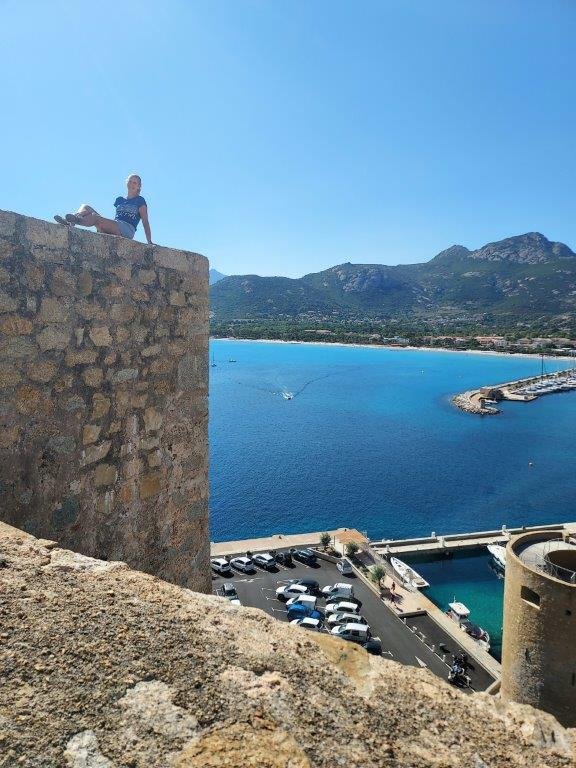
We enjoyed eating dinner at the boat and seeing the beautiful sunset again.

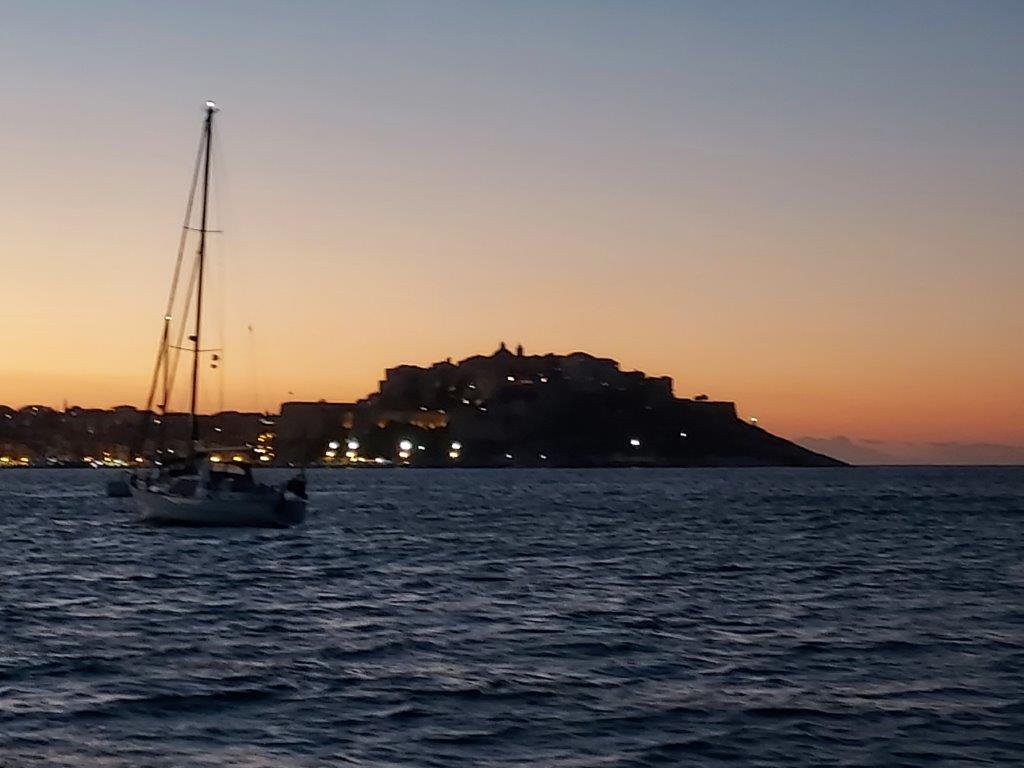
Yvonne treated us to a lovely breakfast in the sun the next day. After 1 week sailing with us, Yvonne had to leave again. The sail from Pisa via Elba to Calvi was about 200 seamiles (1 seamile is 1,8 kilomters), so about 20 to 30 miles per day (4 to 6 hours of sailing a day).


We said goodbye to Yvonne after the lovely breakfast in Calvi, it was really nice to spend the week together with her, because she is so positive about new adventures and travelling. She mentioned she enjoyed all 8 dinners we had outside, also because of the great weather. She prepared one of her favorite dishes for us, which we loved! You can read Yvonne’s retrospective on staying on the boat here.
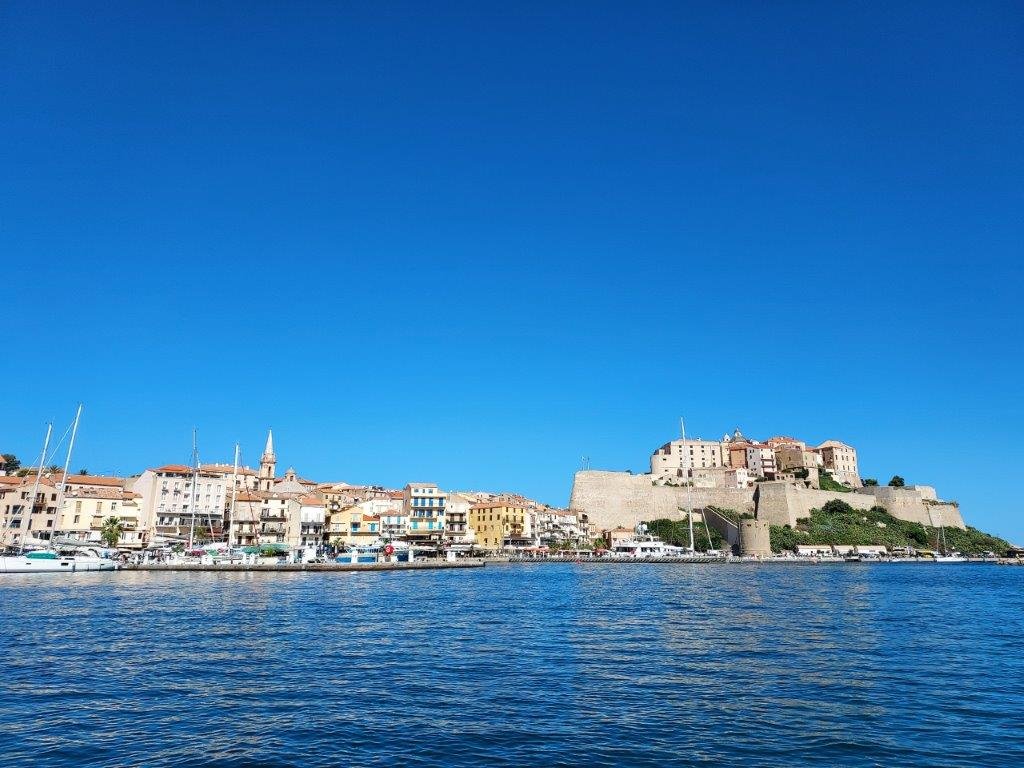

National Parc Scandola
If you thought you had already seen some rugged mountain faces in Corsica as a sailor, well, it was just beginning! This part of Corsica is known for its beautiful rock formations. The National Parc of Scandola is only to be visited over water. You can find cliffs and caves here.

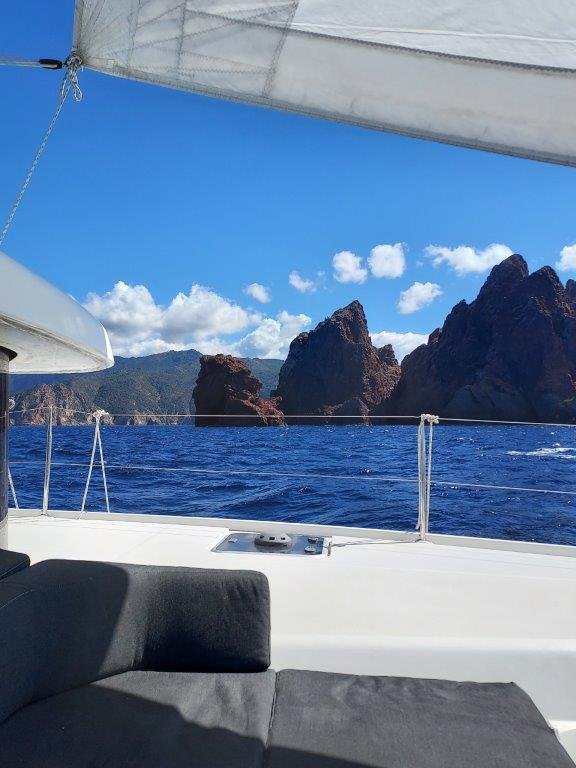
The rock formations turn into red, pink or orange. With the setting sun in the autumn, which is low, the walls turn a beautiful deep red.


We sailed past the mountainrange with enthusiasm and never got bored!

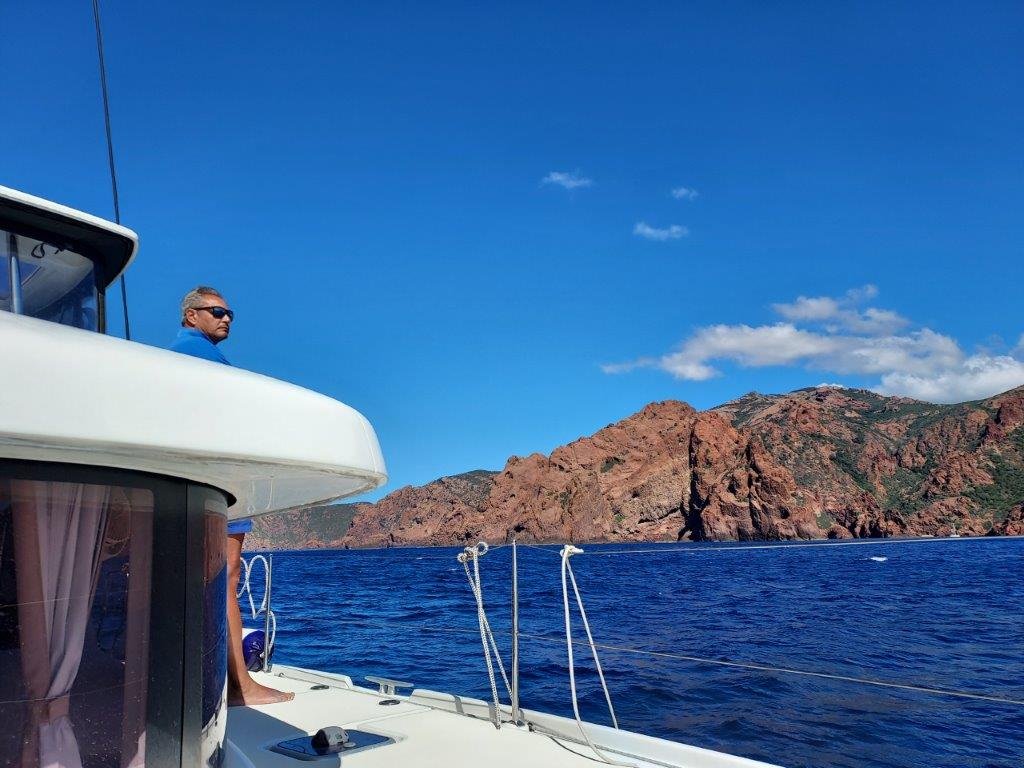
We stopped at Golfe Porto, a large bay where a beautiful village called Port de Porto would be. We took our dinghy there.
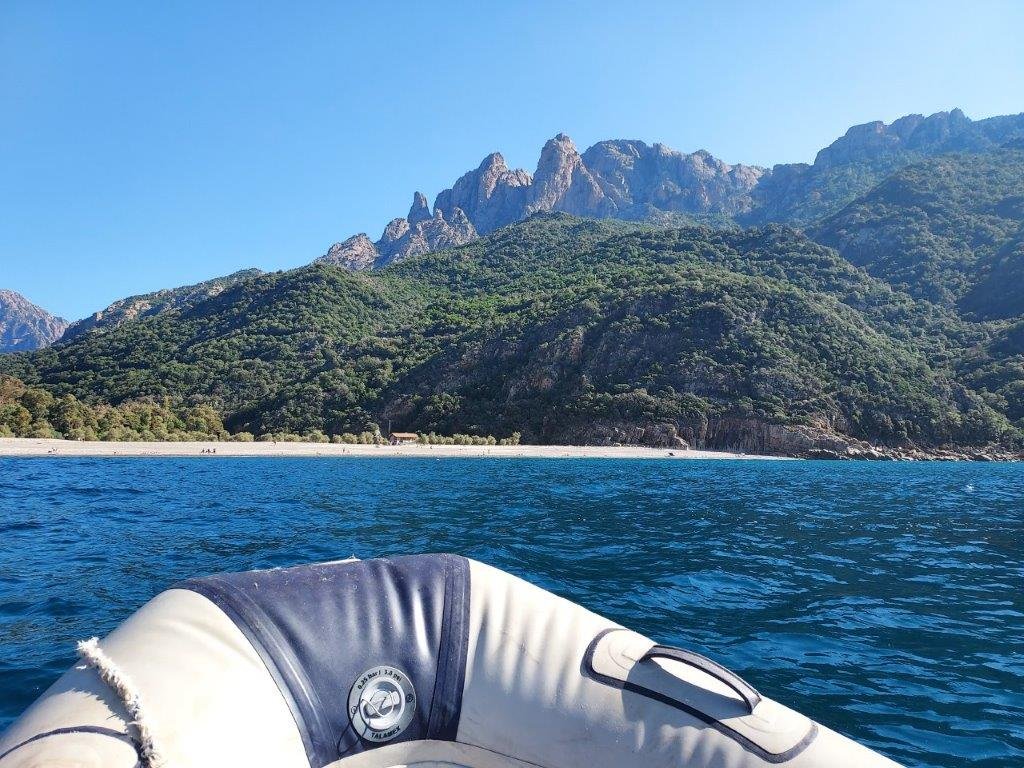
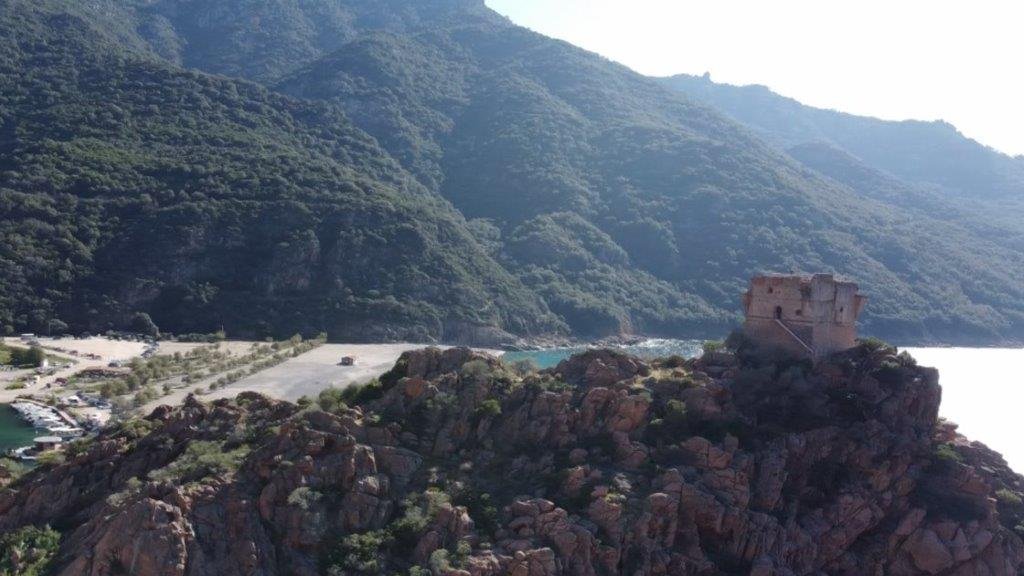
We walked through the lovely village which was surrounded by cliffs, beaches and the rough mountains.

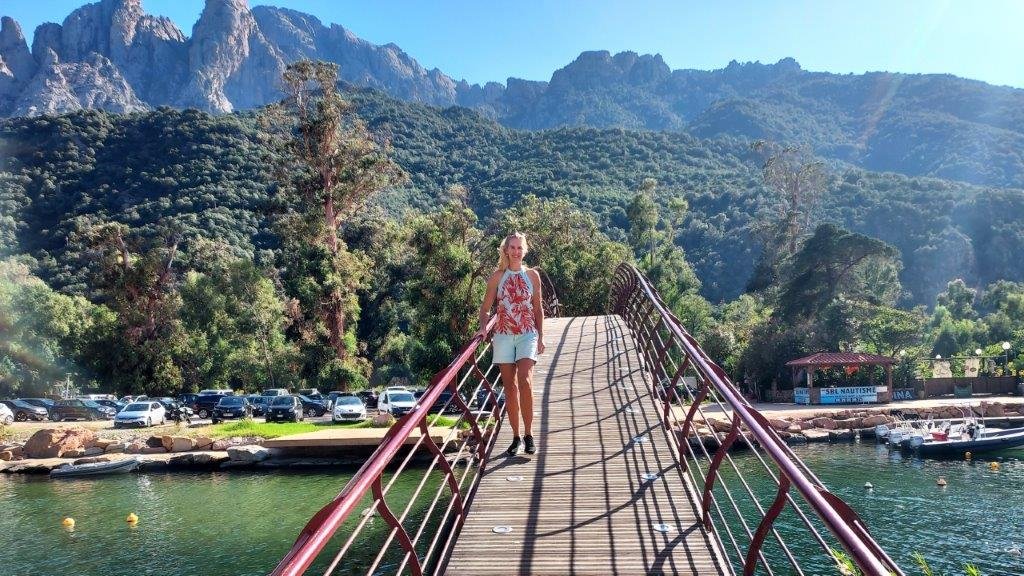

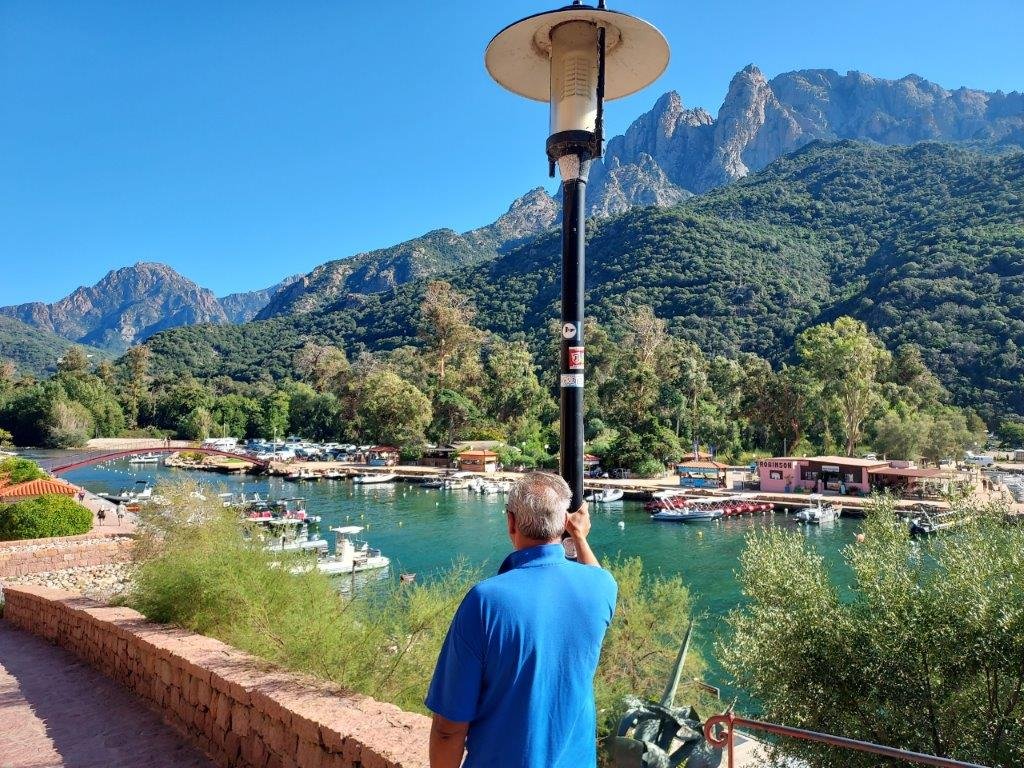
Piana
High in the mountains is the famous village of Piana, we could see it from our catamaran in the bay. Piana has impressive coves with steep walls and rocks, also called calanques.
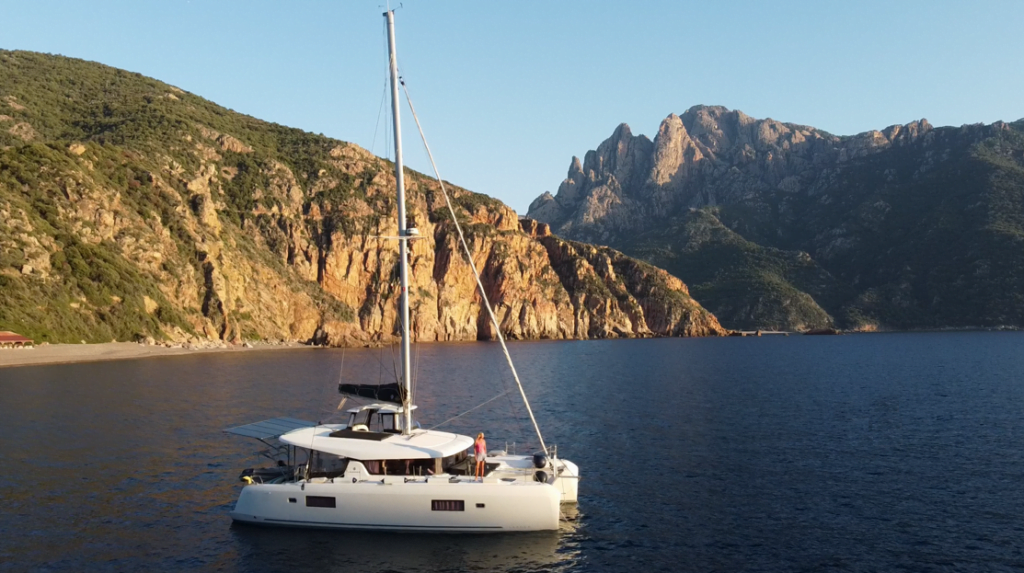
It was too high for us to climb or cycle with our E-bike and E-step, but we took a look with our drone, at the end of the day, so when the sun shone a soft light on the bay.
We enjoyed the northern part of Corsica a lot. Rough and sparsely populated, and an explosion of impressive rockformations. The power of nature at it’s fullest!
Next time, we’ll write about the southern part of Corsica (Corse-du-Sud), which had a surprisingly different natural treats to explore!

